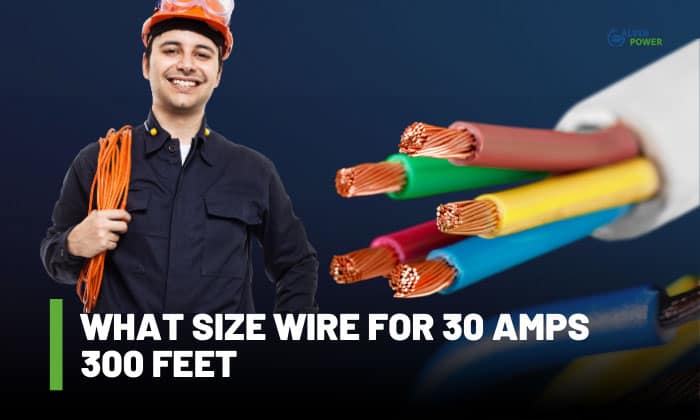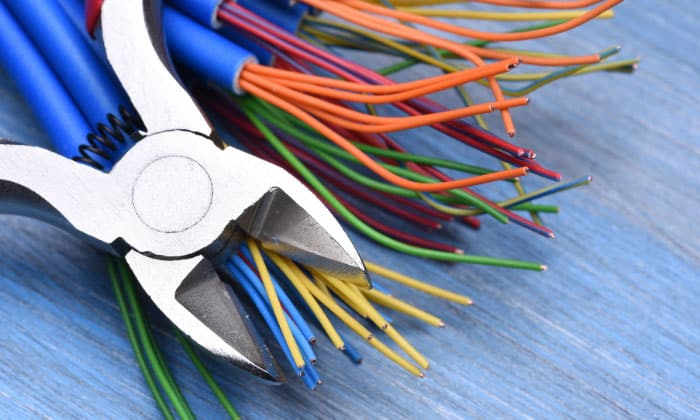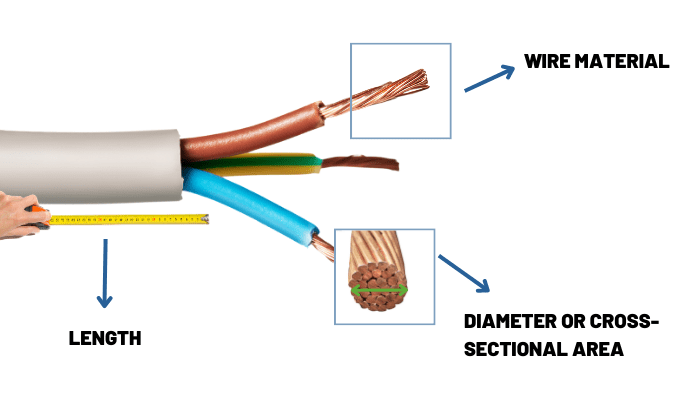Plugging in your equipment far away from the source may pose some challenges. Running a power cable over a long distance, 300 feet, for example, has a chance to cause voltage drops, affecting both the appliances and the cable.
To even out the voltage drop, you have to choose a suitable cable with a proper conductor core big enough to undermine fluctuations.
So, what size wire for 30 amps 300 feet? You can use a 4-gauge wire for a 30 amp 240 volt circuit and a 2-gauge wire for a 120 volt one.
Wire Size
Different wire sizes are available for various uses. The wire sizes are labeled using the American wire gauge (AWG). They range from the thinnest 40 gauge (0.00314 in) to the thickest 0000 or 4/0 gauge (0.4600 in).
The best 30A wire size for a 300-feet run is the gauge that can meet the recommended voltage drop stated by the US National Electric Code (NEC) of 2023.
The NEC recommends up to 3% voltage drop up to the furthest outlet in a branch circuit and up to 5% voltage drop for the combined branch circuit and feeder.
Thus, if we consider the 3% voltage drop, the most suitable wire for a 120-volt outlet 300 feet away will be a 2-gauge wire, and a 240-volt supply will be a 4-gauge wire.
Here is a wire size chart for 300 feet and other different lengths at both voltages for easy reference:
| 240 volts | ||
| Length (feet) | Wire size (AWG) | Voltage drop |
| 200 | 6-gauge | 2.21% |
| 250 | 6-gauge | 2.76% |
| 300 | 4-gauge | 2.15% |
| 350 | 4-gauge | 2.51% |
| 400 | 4-gauge | 2.87% |
| 120 volts | ||
| Length (feet) | Wire size (AWG) | Voltage drop |
| 200 | 4-gauge | 2.87% |
| 250 | 3-gauge | 2.93% |
| 300 | 2-gauge | 2.74% |
| 350 | 1-gauge | 2.60% |
| 400 | 1-gauge | 2.97% |
The values listed in the table are the minimum sizes of copper wire for the following lengths in a residential setting at a power factor of 0.90.
You can use a thicker wire like a 4-gauge for 30 amps 200 feet long at 240 volts if you want. However, do so at your own risk. Using wires thinner than the minimum recommendations will cause the voltage drop to spike, damaging the plugged-in appliances.
Also, you will notice that 10 gauge wire needs to be listed in the table, even though it is rated for 30 amps. If we run 10 gauge wire for 30 amps at 300 feet, the voltage drop would be as much as 7.87% at 240 volts and 15.74% at 120 volts. A huge voltage drop can significantly reduce the performance of plugged equipment and appliances.
If you only need short wires for things like charging your RV beside your home, then 10 gauge wire for 30 amp service will be enough.
10 gauge wire can meet the 3% voltage drop at 120 volts up to 50 feet, making it a sufficient 30 amp service wire size. Also, a 10 gauge wire is cheaper too at $0.30 per foot versus a 4 gauge wire at $1.32 per foot.
How to Calculate Wire Size?
To know the right wire size, we should know if the voltage drop will meet the NEC’s 3% recommendation. We have provided you with calculation tables up to 30 amps 400 feet.
You can always use an online wire size calculator to determine the wire that meets your needs.
These handy websites can quickly estimate voltage drops for your needs, especially if you need to know other voltages like 30A 220v wire size or even a three-phase 208v supply. They will ask for necessary information, including the source voltage, wire material, length of the wire, and output current.
Factors Affecting Wire size
Voltage drop is the main consideration when choosing the right wire size. Voltage drop is proportional to the wire’s internal resistance, so the following factors must be considered:
1. Wire Material
Some materials are better conductors than others with their lower resistivity values. Copper, for instance, has a lower resistivity than aluminum. Thus, copper can allow more current to flow than aluminum for the same thickness and length that equal less voltage drop.
2. Diameter or Cross-sectional Area
A larger diameter will allow more current to flow for a given length. This reduces the voltage drop at the end of the wire.
3. Length
The longer the wire, the more resistance the current will experience as it flows through the wire. Thus, a longer wire will cause more voltage drops. So expect more voltage drop at 30 amps 250 feet than 200 feet for 6-gauge wire.
Read more: What size wire for 30 amps 200 feet?
Conclusion
What size wire for 30 amps 300 feet away from the wall? 30 amp 240v wire size will be 4 gauge while 120v wire size will be 2 gauge. These wire gauges will reduce the voltage drops to recommended levels and power your devices properly at those long distances.
Of course, if the distance is less than 50 feet away, you can go for 10 gauge wire, since it’s cheaper. But longer distances will need thicker wires, so carefully plan your service connections for your RVs or feeders to your sheds as safety precautions.

I am Edwin Jones, in charge of designing content for Galvinpower. I aspire to use my experiences in marketing to create reliable and necessary information to help our readers. It has been fun to work with Andrew and apply his incredible knowledge to our content.



